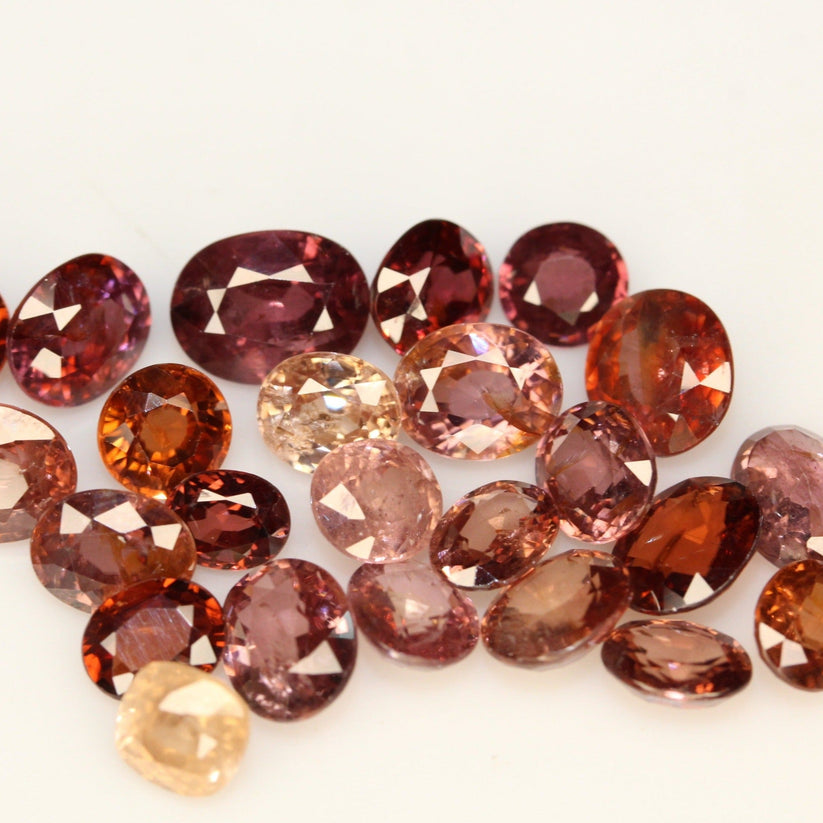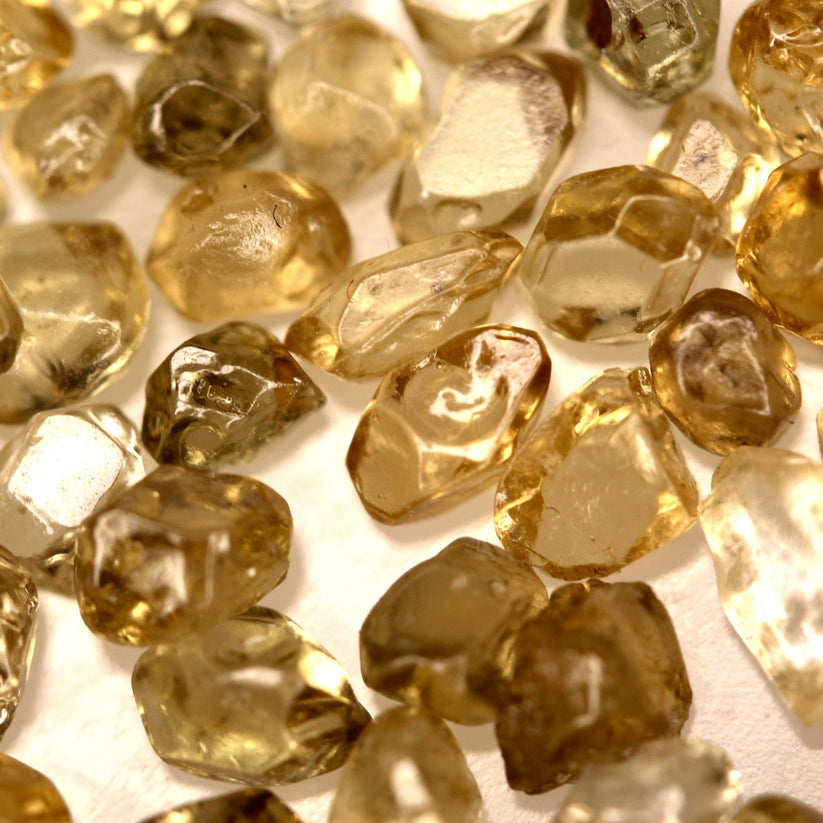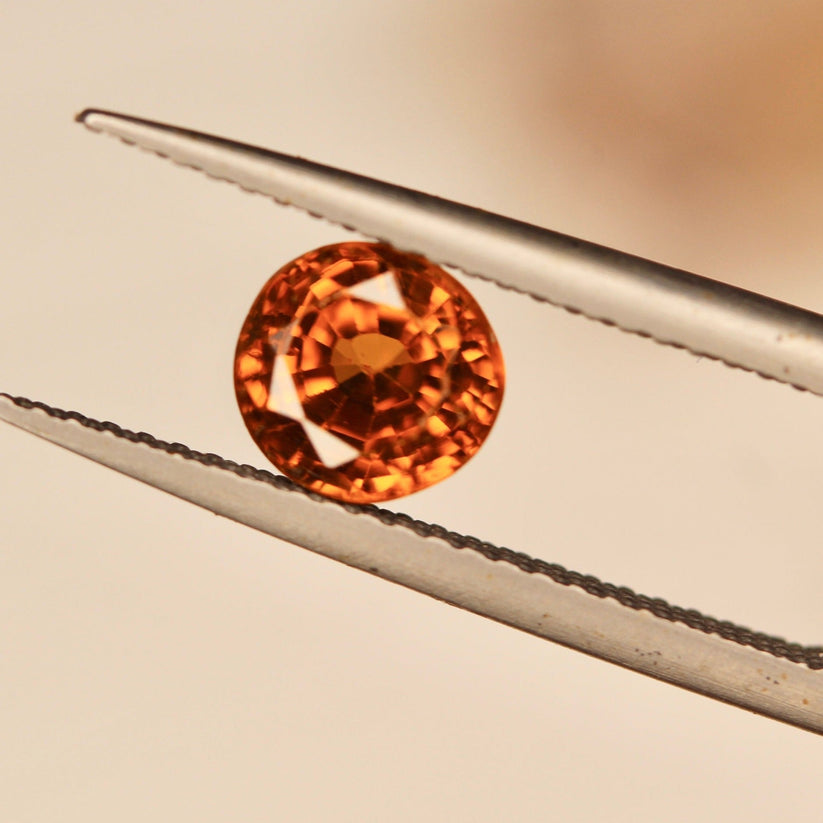Introduction to Zircon Stones? What are they?
Zircon old earth mineral
Zircon, a zirconium silicate mineral, traces its origins to approximately 4.4 million years ago. It shows various colors, including blue, which is the most popular color for jewelry. Due to its chemical composition, zircon endures geological ages like a historical capsule, reflecting the story of changes over time.
Colorless zircon is sometimes mistaken for a diamond substitute. Widespread across the globe, it is found in metamorphic rocks and sea sands.
 The presence of the radioactive element uranium contributes to structural and color transformations over time. In the 1880s, blue zircon gained popularity in jewelry, and subsequently, heat treatment was employed to enhance its beauty and color.
The presence of the radioactive element uranium contributes to structural and color transformations over time. In the 1880s, blue zircon gained popularity in jewelry, and subsequently, heat treatment was employed to enhance its beauty and color.Formation and Geological Background of Zircons
Basically, zircon is formed from the crystallization of magma or in metamorphic rocks. Its formation is atmosphere-dependent, taking millions of years to become a mineral. As clear from its name, zircon is composed of zirconium, silicon, and oxygen, with the chemical formula ZrSiO₄. The crystal structure of zircon allows it to form tetragonal prismatic crystals. The chemical makeup of zircon makes it a durable and heat-resistant mineral. Valued for its properties like color-changing and altering its chemical structure, it is essential for jewelers and mineral enthusiasts. It forms at high temperatures and is incredibly difficult to destroy due to its hardness.

The background of zircon is interesting, providing insights into Earth's changes. This mineral acts as a record keeper, like a small-time capsule, which holds information about Earth's transformations. Zircon stands out as one of the best timekeepers, capturing details of the earliest changes on our planet.
Locations of Zircon Stone
Zircon is commonly found in Sri Lanka, Vietnam, and Thailand, with gem-quality specimens also present in Madagascar, Brazil, Burma, and Tanzania. Its diverse colors have made it a popular choice in jewelry since 1920.
Types of Zircon Stones: -
As we all know, zinc n grows in different rocks and at different temperatures, so it has different physical properties. It can be classified on the basis of its physical properties.
- High Zircon: it is called high zircon because it has a full crystal structure and has no damage to radioactive element radiations. It has a high relative index. And it is mostly used to produce the gemstones.
-
Normal or intermediate zircon: Radioactive element
damages their structure so that it is called intermediate zircon
- Low zircon: the extensive structure of crystal which is damaged from the radioactive element. It has an abnormal structure and is also called amorphous zircon.
- Hyacinth or Jacinth: This zircon is famous because of its orange to red-brown color, and it is a valuable gem because of its colors.
- Matura Diamond: it is the trade name of the zircon which passes through heat treatment and is mostly used in jewelry and has mostly blue shades.
Natural Zircon vs. Synthetic Zircon
Both are gemstones, but the difference is that zircon is naturally produced in the geological process, and it takes millions of years. on the other hand, synthetic zircon is artificial zircon which is produced in a controlled atmosphere in the laboratory.
Artificial zircon is called cubic zirconia and never occurs naturally. Natural zircon has a history, but artificial zircon shows some consistent colors. But zirconium is used in both productions.
Different Colors and Varieties
Zircon has various colors, and its color variation makes it valuable in the world of gemstones. Each type of zircon is unique because of its color and properties. But the most famous variety of zircon is blue, which was used in British royal jewelry in 1980. Then there are other types of zircons, which are mentioned below:
-
Blue Zircon: Blue zircon is the most valued
color of zircon, and it is most used in jewelry also, gems collectors like it. It is also applied heat treatment to enhance its colors.

- Yellow Orange Zircon: This yellow zircon is famous because it shows sunny tones, and it can be found in different shades of yellow.
- Green Zircon: It is not a famous variety of zircon like blue. It is also found in different shades of green color.
- Red and Brown Zircon: if we talk about the rare zircon, then no doubt it will be the red zircon.
- White zircon: white zircon has clear crystal and gives an elegant touch to the jewelry. It is also used as an alternative to diamond.
Folkmarketgems offers a wide collection of zircon gemstones, displaying the beauty and variety of this amazing mineral. With a commitment to quality and authenticity, explore the world of zircon at Folkmarketgems and discover unique pieces for your jewelry collection.
Understanding Zircon Quality
Factors Affecting Zircon Quality
When we talked about the quality of zircon, then, we should consider the 4cs. 4c’s means that the carat, cut, color and clarity. If you are the buyer and understand these 4cs very well, then you can buy a good piece of gem at a suitable price. It is advisable that when dealing with higher-priced stones, especially those in the four-figure range or above, purchase them loose for a thorough examination of weight and quality. However, certain situations, such as acquiring jewelry from an estate or an auction, may limit this option, particularly if the gemstone is already set and removing it would cause damage.


0 comments